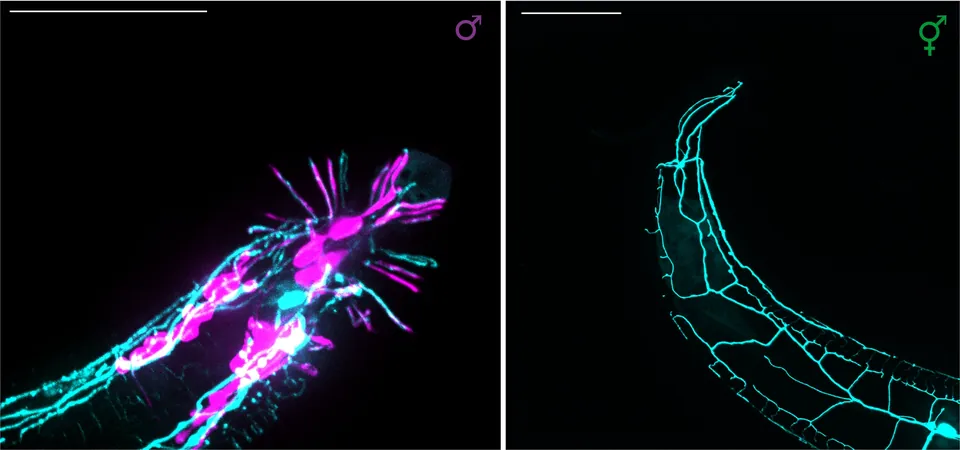
Unveiling New Strategies to Combat Schistosomiasis: Are We Close to a Breakthrough?
2025-04-23
Author: Li
Cracking the Code of Severe Schistosomiasis Cases
Recent breakthroughs from researchers at Penn State are shedding light on the complexities of schistosomiasis, a parasitic disease known for being second only to malaria in public health impact. In a groundbreaking study published in *PLOS Pathogens*, scientists explored how the body’s immune system goes into overdrive in response to the eggs of Schistosoma mansoni—one of the most notorious schistosome parasites.
The Role of Inflammasomes Revealed
The research utilized a mouse model to investigate immune responses triggered by these eggs, discovering that the NLRP3 and AIM2 inflammasomes—essential proteins in our immune cells—play a pivotal role in the severe inflammation associated with the disease. As lead researcher Parisa Kalantari noted, these findings, while preliminary, mark an important step towards understanding how schistosomiasis affects the body and may help pave the way for new treatment options.
Schistosomiasis: A Ticking Time Bomb in Africa
Schistosomiasis predominantly affects communities in Africa, often spreading through water contaminated with parasitic larvae. While many species can cause this debilitating disease, Schistosoma mansoni is notorious for leading to severe gastrointestinal symptoms and potentially fatal complications, including liver fibrosis and gastrointestinal hemorrhage.
The Urgent Need for New Treatments
Schistosomiasis is classified as a neglected tropical disease, with many resources not directed towards its prevention and treatment. Kalantari stressed the importance of developing new therapeutic strategies as existing treatments, like praziquantel, fight only the active infection and do not prevent reinfection. Despite the testing of multiple vaccine candidates, none have provided consistently high levels of protection, prompting further research into innovative solutions.
New Insights on Immune Responses
The researchers observed how immune cells called dendritic cells reacted when stimulated by schistosome eggs and measured various inflammatory markers and genetic responses. They found that key enzymes, caspase-1 and caspase-8, were crucial in activating the inflammasomes linked to severe disease cases. Incredibly, mice lacking the Gasdermin D protein showed milder symptoms, hinting at its potential role in managing schistosomiasis.
Towards a Future of Focused Research
Though the specific components of schistosome eggs that activate NLRP3 and AIM2 inflammasomes remain elusive, future studies will delve into these intricacies, aiming to unlock new methods for combating this persistent health threat. As research continues, the hope is that these insights could revolutionize treatment for millions affected by this overlooked disease.



 Brasil (PT)
Brasil (PT)
 Canada (EN)
Canada (EN)
 Chile (ES)
Chile (ES)
 Česko (CS)
Česko (CS)
 대한민국 (KO)
대한민국 (KO)
 España (ES)
España (ES)
 France (FR)
France (FR)
 Hong Kong (EN)
Hong Kong (EN)
 Italia (IT)
Italia (IT)
 日本 (JA)
日本 (JA)
 Magyarország (HU)
Magyarország (HU)
 Norge (NO)
Norge (NO)
 Polska (PL)
Polska (PL)
 Schweiz (DE)
Schweiz (DE)
 Singapore (EN)
Singapore (EN)
 Sverige (SV)
Sverige (SV)
 Suomi (FI)
Suomi (FI)
 Türkiye (TR)
Türkiye (TR)
 الإمارات العربية المتحدة (AR)
الإمارات العربية المتحدة (AR)